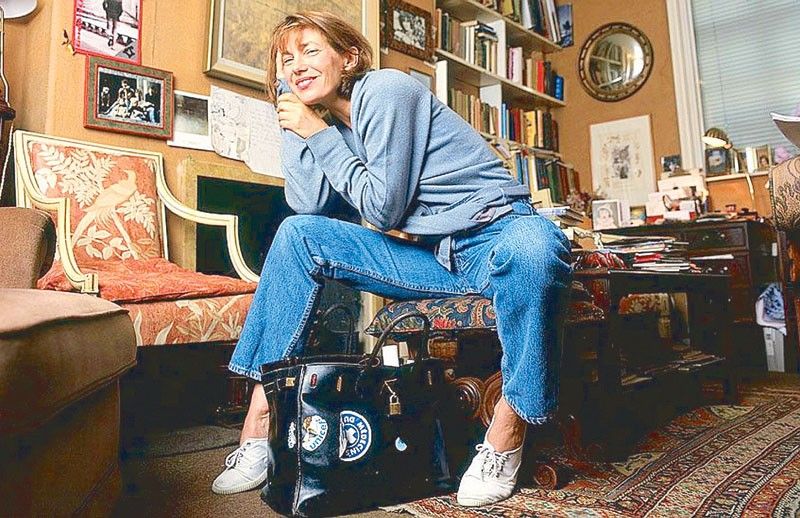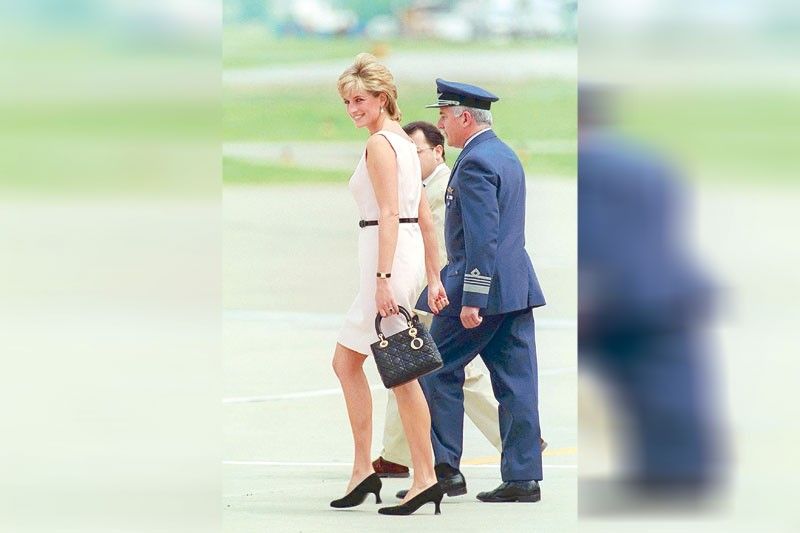Bags that stand the test of time
Trends come and go as we saw pre-pandemic, when fashion was going at its fastest and along with it so was our shopping speed. But now that we have learned to slow down, we are more conscious of our purchases, looking for pieces that will work for a good couple of years if not actually becoming heirloom pieces. With handbags, to make bags highly covetable and collectible, they should definitely have an artisanal tradition of impeccable craftsmanship using only the finest materials. Celebrity associations may add to their value, provided that these personalities have a reputation for quality acquisitions and have proven to be classic style icons. They should also have timeless designs that can be reissued through the years, even if they are tweaked in terms of color and proportions or reimagined to fit contemporary times.
* * *
Follow the authors on Instagram @rickytchitov; Twitter @RickyToledo23; Facebook - Ricky Toledo Chito Vijandre

Hermès Birkin
The Birkin was first created in 1984 for the English-French singer and actress Jane Birkin after she shared a flight with Hermès CEO Jean-Louis Dumas who noticed her frustration in not being able to stuff all her things into her bag. The perfect carryall has remained a classic, just as Jane herself, who projects a young, fresh style that the bag epitomizes. It is said to be a better investment than stocks or gold, increasing in price at an average of 14.2 percent every year. The production is tightly controlled, giving it that mystique of being almost unobtainable with its very limited edition.

Gucci Jackie Hobo
The half-moon hobo bag was first introduced in the 1950s as Constance but after US First Lady Jackie Kennedy was often spotted using it, the bag was renamed after her in 1961. Her glamorous, jet-set lifestyle, encapsulated in a photo of her using it to shield herself from paparazzi, made it an instant hit. A staple through the ’70s, it had revivals through Tom Ford in the ’90s and Frida Giannini in the 2000s. The current creative director, Alessandro Michele, revisited the design, making it available in various colors and sizes, and his muse, Harry Styles, has made it a favorite bag, adding to its cool factor for the gender-fluid generation.

Lady Dior by Christian Dior
One of the most recognizable Dior designs, this bag was originally named “ChouChou,” which means “favorite” or “pet” in French, until it became Princess Diana’s fave and was renamed Lady Dior in her honor -- a symbolic gift presented to her in 1995 by the First Lady of France, Bernadette Chirac, during the opening of a Cézanne exhibition. The signature quilting is a nod to the canework of Napoleon III chairs on which guests at Christian Dior’s haute couture shows would sit and the metallic charms are inspired by the lucky charms that Dior loved so much. Many reinterpretations have been done through the years, making it one of the house’s perennial designs and a symbol of its timeless elegance.
Fendi Baguette
Popularized by the character of Carrie Bradshaw, played by Sarah Jessica Parker in Sex and the City, the Fendi Baguette, launched in 1997, became associated with the fast-paced, liberated lifestyle of New York. It became a must-have after one episode of the TV series in which Carrie gets robbed and indignantly explains to the mugger that her sequined Fendi is “not simply a bag – It’s a Baguette.” Designed by Silvia Venturini Fendi, the bag got its name by having the perfect shape and size to fit snugly under the arm the way the French would carry their beloved bread. In the Philippines, it became the “kilikili” bag. The versatile bag was in such demand that it was produced in over 1,000 versions ever since. With the Sex and the City sequel And Just Like That produced recently, the Fendi Baguette was reinvented yet again for the Gen-Z generation that has kept up a fascination for the ’90s.
Louis Vuitton speedy
Since its inception in the 1930s, the monogram printed bag has been a classic everyday piece exemplifying easy elegance and comfort. In 1959, Audrey Hepburn requested a smaller version, turning the keepall travel bag into a miniaturized day bag that she could carry often. This 25 cm version achieved iconic status, never losing popularity since the ’50s and has since been reissued in a variety of sizes, materials and colors.
Chanel 2.55 flap bag
Named after the month and year of its creation, the Chanel 2.55 Flap Bag was released by the house’s founder, Gabrielle “Coco” Chanel herself. In the 1920s, tired of having to carry her handbag in her arms, she designed a handbag that freed her hands, starting a handbag revolution that gave women more freedom. Inspired by straps found on soldier’s bags, she added thin straps and introduced the design to the market in 1929. During a successful comeback to fashion in 1954, she updated the bag to the 2.55, which was released in February 1955. It had a quilt pattern like the jockey’s padded riding jackets, a distinctive “Mademoiselle” lock (in reference to her never marrying) and a shoulder strap of chains just like those carried on the waists of the caretakers in the convent where she grew up. The Classic Flap with the signature CC logo, replacing the former rectangular lock, was first recreated by Karl Lagerfeld in 1983 and has since become another staple of the house. An exact copy of the original was released in February 2005 to commemorate its 50th anniversary. Since the bag’s release in 1955, the price has far outpaced inflation, with a rapid value increase since 1990 and increasing from $2,850 in 2010 to $5,600 as of 2019 and $9,500 in 2022.



















